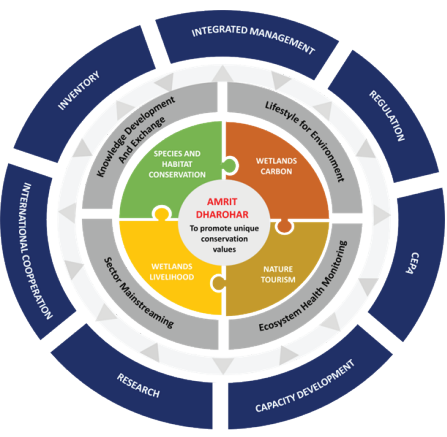Recently, Ministry of Tourism started training in Bhitarkanika National Park, Odisha under Amrit Dharohar Capacity Building Scheme.
- Goal – To promote unique conservation values of Ramsar Sites’.
Ramsar Convention of 1971, an intergovernmental treaty for conservation and wise use of wetlands, was ratified by India in 1982.
- Purpose – To maintain healthy Ramsar Sites which
- Provide water and food security and buffer the landscape from floods, droughts, and extreme events.
- Generate local employment and support livelihoods
- Provide habitats for species Maintain and enhance carbon sinks
- Conserve and celebrate rich cultural heritage
- Timeline – From June 5, 2023 till June 5, 2026.
June 5 is celebrated as World Environment Day.
- Implementation – In convergence with Central Government, State Wetland Authorities, institutions and individuals.
Amrit Dharohar Capacity Building Scheme
- Aim – To enhance livelihood opportunities for local communities.
- Implemented by – IITTM, an autonomous body under Ministry of Tourism, in collaboration with MoEFCC.
- Training programmes – Alternative Livelihood program (ALP) and Paryatan Navik Certificate (PNC).
- Implementation – In 1st phase, 5 Ramsar sites were identified.
- Sultanpur National Park – Haryana
- Sirpur wetland – Madhya Pradesh
- Yashwant Sagar – Madhya Pradesh
- Bhitarkanika National Park – Odisha
- Chilika Lake – Odisha





